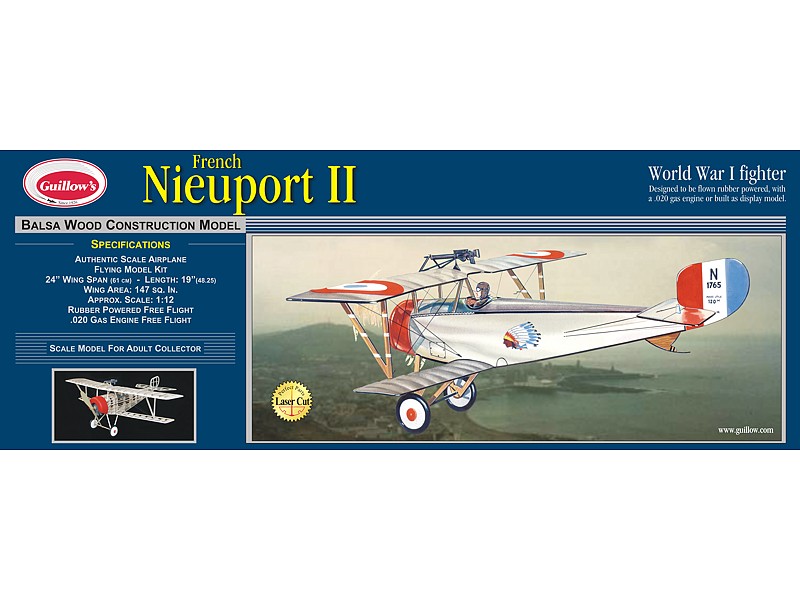Nieuport II – Guillow’s
Information
The Nieuport 11 reached the French front in January 1916, and 90 were in service within the month. This small sesquiplane outclassed the Fokker Eindecker in every respect, including speed, climb rate and maneuverability. It featured ailerons for lateral control rather than the Fokker’s wing warping, giving lighter, quicker roll response, and its elevator was attached to a conventional tail plane which provided better pitch control as opposed to the all-moving, balanced “Morane type” elevators of the Fokker.
The Fokker’s sole remaining advantage was its synchronized machine gun, which fired forward through the arc of its propeller. At the time, the Allies lacked a similar system, and the Nieuport 11’s Lewis machine gun was mounted to fire over the propeller, allowing uninterrupted forward fire. The Lewis was not synchronizable, due to its open bolt firing cycle design which resulted in an unpredictable rate of fire. Clearing gun jams and replacing ammunition drums in flight were challenging though, and the drums limited ammunition supply. This was eventually resolved in French service by the application of the Alkan synchronization gear with a Vickers machine gun to Nieuport fighters starting with some later examples of the Nieuport 16. The British, in the absence of their own satisfactory synchronizer, continued with the overwing Lewis but employed the improved Foster mounting and a new “double” Lewis drum with a capacity of 98 rounds.
During the course of the Battle of Verdun in February 1916, the combination of the Nieuport 11s technical advantages and its concentration in dedicated fighter units allowed the French to establish air superiority, forcing radical changes in German tactics. The impact of the Nieuport was so dramatic that in mid to late 1916 several captured examples were repaired, rearmed with a synchronised “Spandau” gun, and flown at the front. One of these was N1324, briefly flown by Kurt Student in August 1916. Others were supplied by Idflieg to a number of manufacturers, requesting copies be built; this had considerable direct and indirect influence on German fighter design.
Some Nieuport 11s and 16s were fitted to fire Le Prieur rockets from the struts for attacks on observation balloons and airships.[3]
By March 1916 the Bébé was being replaced by the improved Nieuport 17, although Italian-built examples remained in first line service longer, as did Russian examples. Thereafter the Nieuport 11s and 16 continued to be widely used as trainers.
any/all videos that may be on this site were found on youtube and are not produced by historicships.com. If your video is here and you do not wish it to be here please let us know and we will remove it.


